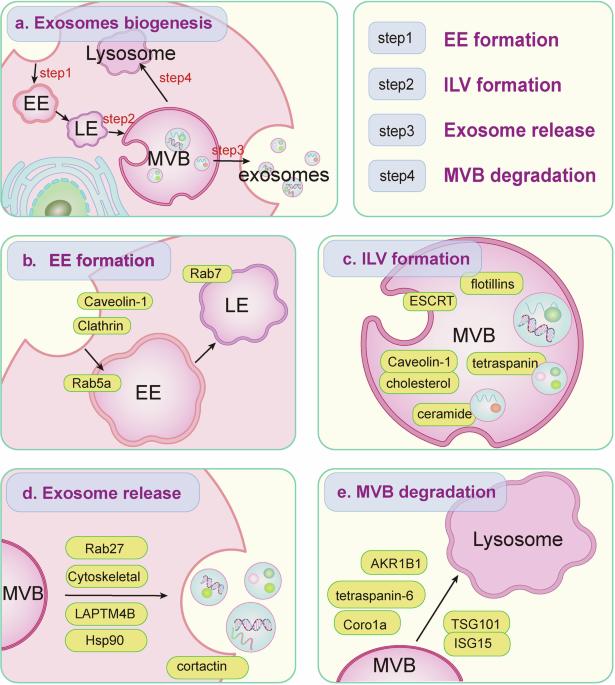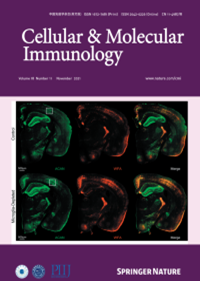外泌体在免疫病理中的作用及其潜在的治疗意义。
IF 19.8
1区 医学
Q1 IMMUNOLOGY
引用次数: 0
摘要
细胞外囊泡(EVs)包括外泌体、外泌体和凋亡小体,由各种细胞释放。在这些亚型中,外泌体已被广泛研究,并被证明是涉及多种生理和病理过程的细胞间通讯的重要介质。影响外泌体生物发生的四个主要步骤是:早期内泌体的产生,多泡体(MVBs)的形成和成熟,MVB与质膜融合以释放外泌体,以及MVB与溶酶体融合以降解外泌体。在MVBs的形成和成熟过程中,主要的效应分子,如rna和蛋白质,通过不同的机制被分类到外泌体中。然而,外泌体的效应分子是动态的,可以实时反映细胞状态。因此,在疾病条件下细胞分泌的外泌体往往具有致病性。本文综述了近年来外泌体生物发生和免疫病理作用的研究进展。此外,本文还综述了减轻外泌体病理作用的潜在策略。本文章由计算机程序翻译,如有差异,请以英文原文为准。

The role of exosomes in immunopathology and potential therapeutic implications
Extracellular vesicles (EVs), including exosomes, ectosomes, and apoptotic bodies, are released by various cells. Among these subtypes, exosomes have been extensively studied and demonstrated to be crucial mediators of intercellular communication involving multiple physiological and pathological processes. Four primary steps influence the biogenesis of exosomes: generation of early endosomes, formation and maturation of multivesicular bodies (MVBs), MVB and plasma membrane fusion for exosome release, and MVB fusion with lysosomes for degradation. During the formation and maturation of MVBs, the main effector molecules, such as RNAs and proteins, are sorted into exosomes via diverse mechanisms. However, the effector molecules of exosomes are dynamic and reflect cell states in real time. Therefore, exosomes secreted by cells under disease conditions are often pathogenic. This review focuses on recent advances in the understanding of exosome biogenesis and the immunopathological effects of exosomes. In addition, potential strategies to mitigate the pathological effects of exosomes are summarized in this review.
求助全文
通过发布文献求助,成功后即可免费获取论文全文。
去求助
来源期刊
CiteScore
31.20
自引率
1.20%
发文量
903
审稿时长
1 months
期刊介绍:
Cellular & Molecular Immunology, a monthly journal from the Chinese Society of Immunology and the University of Science and Technology of China, serves as a comprehensive platform covering both basic immunology research and clinical applications. The journal publishes a variety of article types, including Articles, Review Articles, Mini Reviews, and Short Communications, focusing on diverse aspects of cellular and molecular immunology.

 求助内容:
求助内容: 应助结果提醒方式:
应助结果提醒方式:


